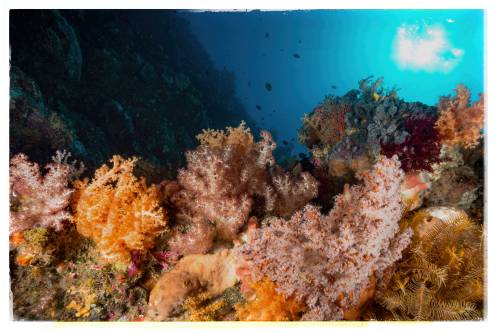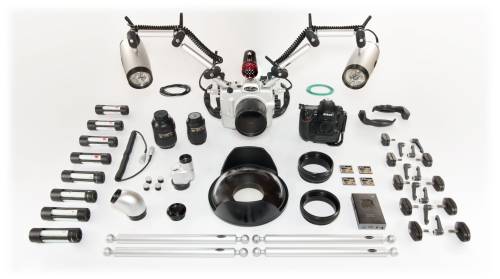
Underwater Housing
It is the tool that allows you to use the underwater camera. This fully waterproof case can be made of plexiglass, carbon or aluminium. The aluminium diving suits, like the one used by myself, can operate without any problems up to 80 meters deep. Well beyond the limits of recreational diving.
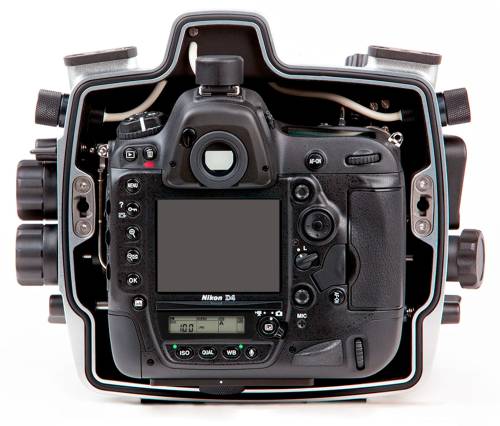
Light and Water
For an underwater photographer it is very important to know how the propagation of light in the water take place.
It should first be taken into consideration that not all the solar radiation is able to reach in depth. A portion of light is lost because it is reflected from the sea surface. The amount of light reflected depends on the inclination of the sun, on the time and latitude. For example, if the sun is at the zenith (i.e. perpendicular to the surface of the sea), the reflected light does not exceed 2%. On the opposite, for example at sunset when the sun is low on the horizon, the reflected light can arrive at 30%. The daily average of light reflected is 7%.
The part of radiation that has not been reflected and that can penetrate into the sea is then progressively absorbed by the water layers that it crosses. This phenomenon, called selective absorption, causes the different wavelengths that make up the light from being absorbed by the water at different depths. On average only 1% of the light can exceed 100-150 meters deep.
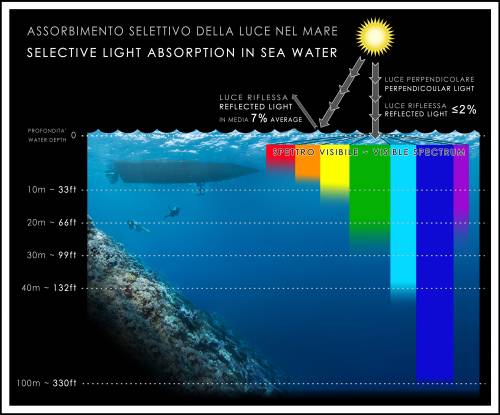
Suspension
This term refers to the micro particles in the water such as plankton and the sand moved by the current or most simply raised by a careless kick. When these particles are illuminated by flashes of light, they are reflected in the picture, causing the appearance of many white spots which are not always possible to be completely eliminated in Photoshop.
The underwater photographer must pay close attention to the suspension because if it is true, that this is always present, it is also true that there are some devices to limit it’s impact. First of all, being careful not to lift the suspension with the kick and then placing the distant flash and angled with respect to the lens shooting. In this way the lens will let come in only a small percent of the flash of light reflected by the micro particles.
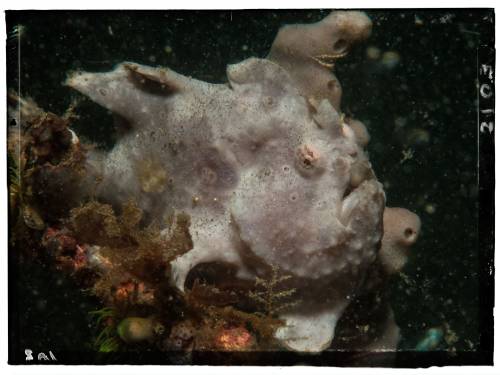
Macro Photography
This means making an immersion moving very slowly, searching for small or microscopic creatures that can only be seen by the guides mounting on a macro lens camera i.e. a lens thanks to it magnification capability allows you to shoot very small subjects.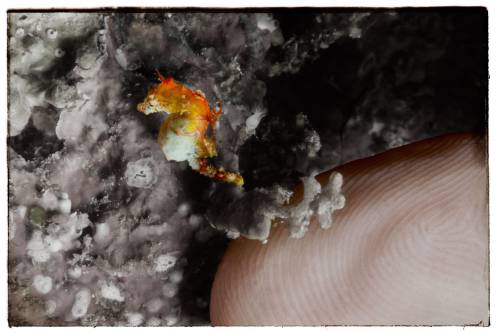
Environment Photography
This is to dedicate a dive to photograph subjects of medium to large size and the environment around them, by fitting wide-angle lens.